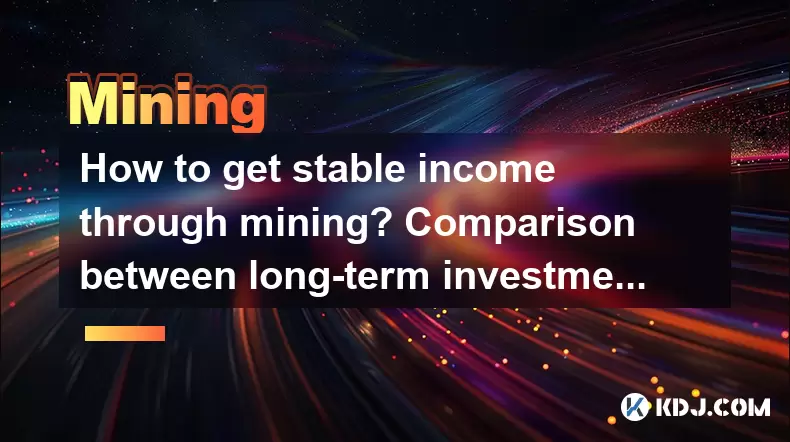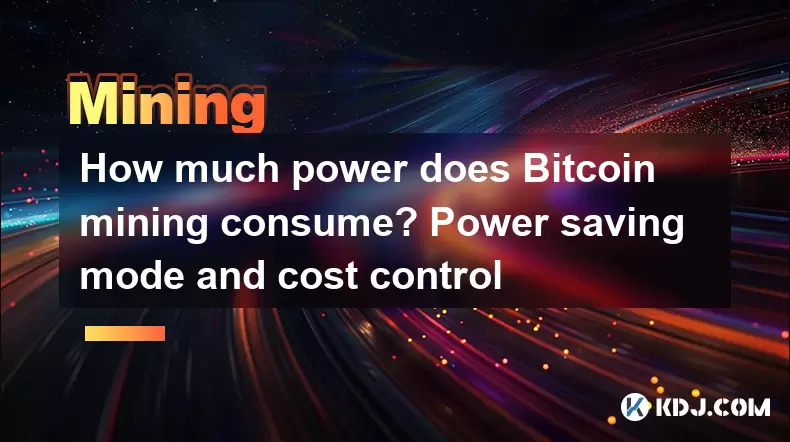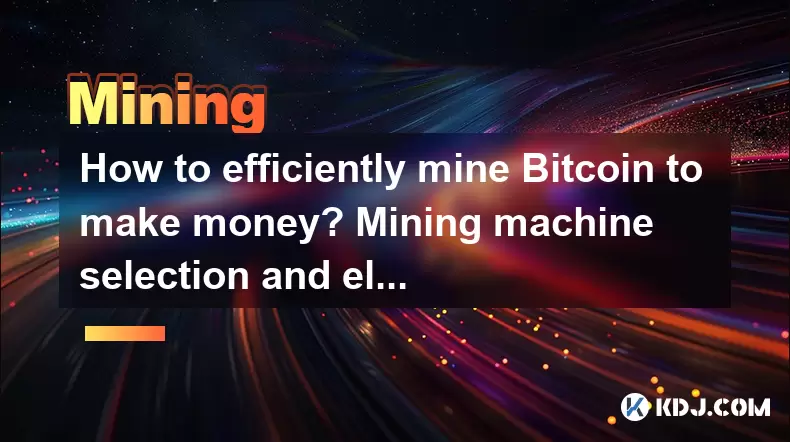-
 Bitcoin
Bitcoin $105,258.6189
0.51% -
 Ethereum
Ethereum $2,537.6983
-0.09% -
 Tether USDt
Tether USDt $1.0004
0.01% -
 XRP
XRP $2.1623
-1.02% -
 BNB
BNB $656.2037
-0.25% -
 Solana
Solana $155.6835
-0.36% -
 USDC
USDC $0.9998
-0.01% -
 Dogecoin
Dogecoin $0.1932
0.32% -
 TRON
TRON $0.2684
0.58% -
 Cardano
Cardano $0.6799
-0.56% -
 Sui
Sui $3.3044
1.12% -
 Hyperliquid
Hyperliquid $32.7198
-0.42% -
 Chainlink
Chainlink $14.0014
0.51% -
 Avalanche
Avalanche $20.9184
0.45% -
 Stellar
Stellar $0.2673
0.10% -
 Bitcoin Cash
Bitcoin Cash $404.5400
-3.44% -
 UNUS SED LEO
UNUS SED LEO $8.6316
0.20% -
 Toncoin
Toncoin $3.1428
1.42% -
 Shiba Inu
Shiba Inu $0.0...01303
2.38% -
 Hedera
Hedera $0.1685
0.17% -
 Litecoin
Litecoin $87.8367
0.48% -
 Polkadot
Polkadot $4.0670
-0.59% -
 Monero
Monero $328.6720
1.59% -
 Bitget Token
Bitget Token $4.7421
-0.20% -
 Ethena USDe
Ethena USDe $1.0012
0.02% -
 Dai
Dai $1.0000
0.02% -
 Pepe
Pepe $0.0...01184
1.31% -
 Pi
Pi $0.6440
1.49% -
 Uniswap
Uniswap $6.2558
2.47% -
 Aave
Aave $253.1300
1.69%
Tutorial on how to earn Bitcoin by mining
To maximize Bitcoin mining earnings, choose efficient hardware, join a reliable mining pool, and optimize mining setups through overclocking, cooling, and energy-saving measures.
Jan 10, 2025 at 12:18 am

Comprehensive Tutorial: Mastering Bitcoin Mining for Optimal Earnings
Key Points:
- Determine optimal hardware and software for efficient mining
- Understand the different algorithms used in Bitcoin mining
- Select a reliable mining pool for increased earning potential
- Optimize mining efficiency through proper setup and maintenance
- Explore alternative methods for generating Bitcoin income
Understanding Bitcoin Mining
Bitcoin mining is the process of verifying and adding new transactions to the Bitcoin blockchain. Miners use specialized hardware to solve complex mathematical problems, and the first miner to find a solution receives a block reward in Bitcoin.
Essential Setup for Bitcoin Mining
1. Hardware Selection:
- ASIC Miners (Application-Specific Integrated Circuits): Highly efficient devices specifically designed for Bitcoin mining
- GPUs (Graphics Processing Units): Gaming cards that can be repurposed for mining, but less efficient than ASICs
2. Software Choice:
- Mining Software: Executes the mining algorithms and manages the hardware
- Mining Pools: Collectives of miners that combine computing power for increased earning potential
3. Pool Selection:
- PPS Pools (Pay-Per-Share): Miners receive payment for every accepted share, even if the pool does not find a block
- PPLNS Pools (Pay-Per-Last-N-Shares): Miners receive payment for shares contributed to the last N blocks found
- Solo Mining: Mining independently without joining a pool, but with significantly reduced chances of finding a block
Optimizing Mining Efficiency
1. Overclocking: Increase hardware performance by carefully adjusting its clock speed, but monitor temperatures to avoid damage
2. Cooling: Maintain proper ventilation and cooling systems to prevent overheating and ensure optimal performance
3. Energy Efficiency: Use energy-efficient power supplies and consider renewable energy sources to minimize operational costs
Alternative Methods for Generating Bitcoin
1. Cloud Mining: Purchase mining contracts from cloud-based services that handle the hardware and electricity costs, reducing upfront investment
2. Bitcoin Mining Rewards: Earn Bitcoin by participating in Proof-of-Work projects or airdrops, but research the legitimacy of such platforms
3. Affiliate Programs: Promote Bitcoin-related products and services to earn commissions, leveraging your audience or network
4. Bitcoin Faucets: Visit websites that distribute small amounts of Bitcoin for completing tasks, but be aware of potential scams or low earning rates
FAQs:
Q: What is the most profitable cryptocurrency to mine?
A: While Bitcoin remains the most popular and valuable cryptocurrency, other altcoins like Ethereum, Litecoin, and Dogecoin can also be profitable to mine.
Q: Is it still profitable to mine Bitcoin?
A: Profitability varies based on factors such as hardware costs, electricity rates, and mining difficulty. Use mining calculators or consult experts to assess profitability for your specific circumstances.
Q: What are the risks of Bitcoin mining?
A: Hardware failure, fluctuations in cryptocurrency value, and mining difficulty adjustments are potential risks to consider.
Disclaimer:info@kdj.com
The information provided is not trading advice. kdj.com does not assume any responsibility for any investments made based on the information provided in this article. Cryptocurrencies are highly volatile and it is highly recommended that you invest with caution after thorough research!
If you believe that the content used on this website infringes your copyright, please contact us immediately (info@kdj.com) and we will delete it promptly.
- Cardano’s $35M Shock Exit: Could ADA Lead the Next Crypto Surge?
- 2025-06-02 00:01:00
- Top Universities That Produce Venture-Backed Startup Founders
- 2025-06-02 00:01:00
- XRP Price Today Drops Below $2.45 Resistance as Bears Regain Control
- 2025-06-01 23:55:12
- Ripple vs SEC Battle Might Finally Be Wrapping Up This Year
- 2025-06-01 23:55:12
- Ethereum (ETH) Expected to Outperform Solana (SOL) During the Upcoming Altcoin Season
- 2025-06-01 23:50:12
- Bitcoin Pepe Emerges as a Standout Contender in the 2025 Meme Coin Rally
- 2025-06-01 23:50:12
Related knowledge

How to get stable income through mining? Comparison between long-term investment and short-term arbitrage
May 31,2025 at 09:22pm
Mining cryptocurrencies has become a popular method for individuals looking to generate a stable income within the crypto ecosystem. By dedicating computational resources to secure and validate transactions on various blockchain networks, miners are rewarded with cryptocurrency. This article will delve into the strategies for achieving a stable income t...

How much power does Bitcoin mining consume? Power saving mode and cost control
May 30,2025 at 07:21am
Bitcoin mining is a process that requires significant computational power, and as a result, it consumes a considerable amount of electricity. Understanding the power consumption of Bitcoin mining is crucial for miners looking to optimize their operations and control costs. In this article, we will delve into the details of Bitcoin mining power consumpti...

How to make Bitcoin with cloud mining? Platform selection and pit avoidance guide
May 31,2025 at 08:43am
Cloud mining has emerged as a popular method for individuals to earn Bitcoin without the need for expensive hardware or technical expertise. This guide will walk you through the process of making Bitcoin with cloud mining, focusing on platform selection and how to avoid common pitfalls. Understanding Cloud MiningCloud mining is a process where individua...

How much startup capital is needed for Bitcoin mining? Analysis of the best investment strategy
May 31,2025 at 07:56am
How much startup capital is needed for Bitcoin mining? Analysis of the best investment strategy Bitcoin mining has become an increasingly popular venture for those looking to invest in the cryptocurrency space. However, the question of how much startup capital is needed for Bitcoin mining, and what the best investment strategy might be, are crucial cons...

How to make money from mining Bitcoin at home? Recommended configuration for small mining machines
May 30,2025 at 02:56pm
Mining Bitcoin at home can be an exciting way to participate in the cryptocurrency ecosystem and potentially earn some profits. However, it requires a good understanding of the process, the right equipment, and a strategic approach. In this article, we will explore how to make money from mining Bitcoin at home and provide recommended configurations for ...

How to efficiently mine Bitcoin to make money? Mining machine selection and electricity cost analysis
May 30,2025 at 09:36pm
Mining Bitcoin has become an increasingly popular way for individuals to participate in the cryptocurrency ecosystem and potentially earn profits. However, the process can be complex and requires careful consideration of several factors, including the selection of mining machines and the analysis of electricity costs. In this article, we will explore ho...

How to get stable income through mining? Comparison between long-term investment and short-term arbitrage
May 31,2025 at 09:22pm
Mining cryptocurrencies has become a popular method for individuals looking to generate a stable income within the crypto ecosystem. By dedicating computational resources to secure and validate transactions on various blockchain networks, miners are rewarded with cryptocurrency. This article will delve into the strategies for achieving a stable income t...

How much power does Bitcoin mining consume? Power saving mode and cost control
May 30,2025 at 07:21am
Bitcoin mining is a process that requires significant computational power, and as a result, it consumes a considerable amount of electricity. Understanding the power consumption of Bitcoin mining is crucial for miners looking to optimize their operations and control costs. In this article, we will delve into the details of Bitcoin mining power consumpti...

How to make Bitcoin with cloud mining? Platform selection and pit avoidance guide
May 31,2025 at 08:43am
Cloud mining has emerged as a popular method for individuals to earn Bitcoin without the need for expensive hardware or technical expertise. This guide will walk you through the process of making Bitcoin with cloud mining, focusing on platform selection and how to avoid common pitfalls. Understanding Cloud MiningCloud mining is a process where individua...

How much startup capital is needed for Bitcoin mining? Analysis of the best investment strategy
May 31,2025 at 07:56am
How much startup capital is needed for Bitcoin mining? Analysis of the best investment strategy Bitcoin mining has become an increasingly popular venture for those looking to invest in the cryptocurrency space. However, the question of how much startup capital is needed for Bitcoin mining, and what the best investment strategy might be, are crucial cons...

How to make money from mining Bitcoin at home? Recommended configuration for small mining machines
May 30,2025 at 02:56pm
Mining Bitcoin at home can be an exciting way to participate in the cryptocurrency ecosystem and potentially earn some profits. However, it requires a good understanding of the process, the right equipment, and a strategic approach. In this article, we will explore how to make money from mining Bitcoin at home and provide recommended configurations for ...

How to efficiently mine Bitcoin to make money? Mining machine selection and electricity cost analysis
May 30,2025 at 09:36pm
Mining Bitcoin has become an increasingly popular way for individuals to participate in the cryptocurrency ecosystem and potentially earn profits. However, the process can be complex and requires careful consideration of several factors, including the selection of mining machines and the analysis of electricity costs. In this article, we will explore ho...
See all articles
























































































